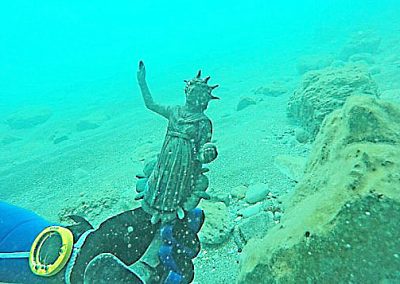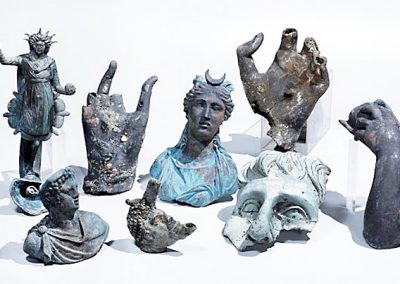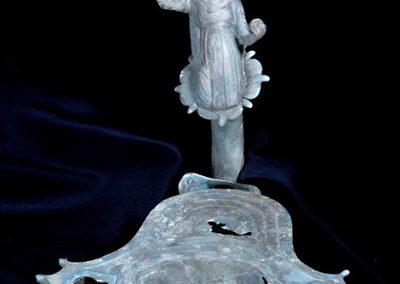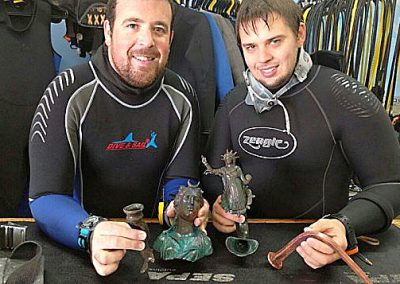
Bible, History, Archaeology
Bible,
History,
Archaeology
A marine cargo dating back 1,600 years
discovered in Caesarea in April 2016
Contents:
The discovery – Assessment of the discovery – Scuba diving – Image gallery
The discovery
A spectacular treasure trove, from the cargo of a ship wrecked in the 4th or 3rd century AD, was discovered in April 2016 by divers at the entrance to the ancient port of Caesarea.
assessment of the discovery
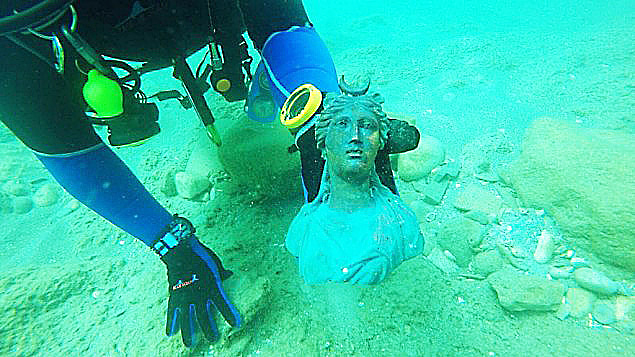
Image opposite: fragment of a bronze lamp decorated with the image of the sun god, Sol. © Ran Feinstein.
As the ancient city of Caesarea was built by the Judean king Herod the Great, these objects date back to Roman times. Most are in bronze and in an exceptional state of preservation. The booty includes, among others, a bronze lamp representing the image of the sun god «Sol», a figurine of the moon goddess «Luna», a lamp representing the head of an African slave, fragments of three life-size bronze statues, and animal-shaped objects such as a whale and a bronze tap in the shape of a boar with a swan on its head.
These discoveries are interesting not only for their beauty, but also for their historical interest. Such a marine collection had not been found in Israel for thirty years.
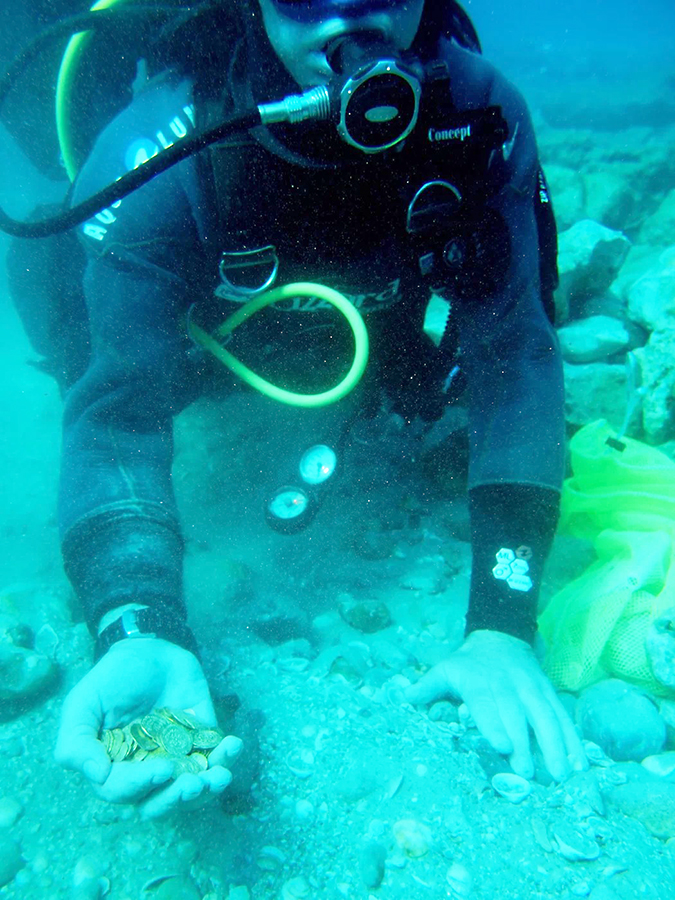
Image opposite: thousands of coins discovered off the coast of Caesarea. IAA.
One of the great surprises of the mission was also the discovery of thousands of coins enclosed in the pottery carried by the ship. They bear the effigy of Emperor Constantine the Great, ruler of the Western Roman Empire in the 4th century, and of Emperor Licinius, his rival who ruled the eastern part of the empire until his defeat in 324 at the Battle of Andrinople.
These discoveries will undergo conservation treatment and thorough examination by the Israel Antiquities Authority. A further 2,000 gold coins were discovered the previous winter and are currently on display at the port of Caesarea.
A spectacular treasure trove, from the cargo of a ship wrecked in the 4th or 3rd century AD, was discovered in April 2016 by divers at the entrance to the ancient port of Caesarea. © Pixabay.
An archaeologist discovers a batch of Roman coins in the mud. Ran Feinstein.
An archaeologist discovers a batch of Roman coins in the vase.
A figurine of the moon goddess, Luna, discovered in Caesarea. © Ran Feinstein.
A figurine of the moon goddess, Luna, discovered in Caesarea.
A bronze lamp decorated with the image of the sun god, Sol. © Ran Feinstein.
A bronze lamp adorned with the image of the sun god, Sol.
The rare bronze objects discovered in Caesarea in April 2016. Clara Amit/
The rare bronze objects discovered in Caesarea,
Heaps of coins discovered at sea, weighing a total of almost 20 kilograms. Clara Amit/IAA.
Heaps of coins were discovered at sea, weighing a total of almost 20 kilograms.
Fragment of a bronze lamp decorated with the image of the sun god, Sol. © Ran Feinstein.
Fragment of a bronze lamp decorated with the image of the sun god, Sol.
Ran Feinstein (right) and Ofer Raanan after the discovery. Diving center in the old center of Caesarea. Ran Feinstein.
Ran Feinstein (right) and Ofer Raanan after the discovery. Diving center in the old center of Caesarea.



